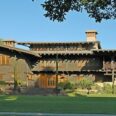
Engineers at NASA’s Jet Propulsion Laboratory in Pasadena are trying to fix a problem with the Mars Curiosity rover’s drill mechanism, as the vehicle remains stationary on the red planet.
The rover team at JPL learned on December 1 that Curiosity did not complete the commands for drilling. The rover detected a fault in the “drill feed” mechanism that prevented the drill from touching the rock target.
“We are in the process of defining a set of diagnostic tests to carefully assess the drill feed mechanism. We are using our test rover here on Earth to try out these tests before we run them on Mars,” Curiosity Deputy Project Manager Steven Lee at JPL said Monday. “To be cautious, until we run the tests on Curiosity, we want to restrict any dynamic changes that could affect the diagnosis. That means not moving the arm and not driving, which could shake it.”
“We said ‘go,’ and it just didn’t go,” says Ashwin Vasavada, a project scientist at JPL told NPR.
The drill feed mechanism pushes the front of the drill outward from the turret of tools at the end of Curiosity’s robotic arm. The drill collects powdered rock that is analyzed by laboratory instruments inside the rover.
Even as it remains stranded, the rover is studying its surroundings and monitoring the environment, rather than driving or using its arm for science.
‘We’re keeping busy with using the other instruments on the rover while they do these tests,’ said Ashwin Vasavada, project scientist.
At its current location, Curiosity has driven 9.33 miles since landing inside Mars’ Gale Crater in August 2012. That includes more than half a mile since departing a cluster of scenic mesas and buttes – called “Murray Buttes” – in September. Curiosity has climbed 541 feet in elevation since landing, including 144 feet since departing Murray Buttes, according to NASA.
Since 2012, Curiosity has uncovered geologic evidence of an ancient environment that could have supported primitive life early in the red planet’s history. At Mount Sharp, the rover plans to climb to higher and younger rock formations.
Before the drill mechanism snag, the six-wheel rover found more evidence of a watery history on the slopes of Mount Sharp including the presence of certain chemicals that suggests a warmer and wetter past unlike the current frigid, harsh environment.
JPL, a division of Caltech, manages NASA’s Mars Science Laboratory Project for NASA’s Science Mission Directorate in Washington, and built the Curiosity rover.
For more information about the mission, visit www.mars.jpl.nasa.gov/msl.














 0 comments
0 comments


